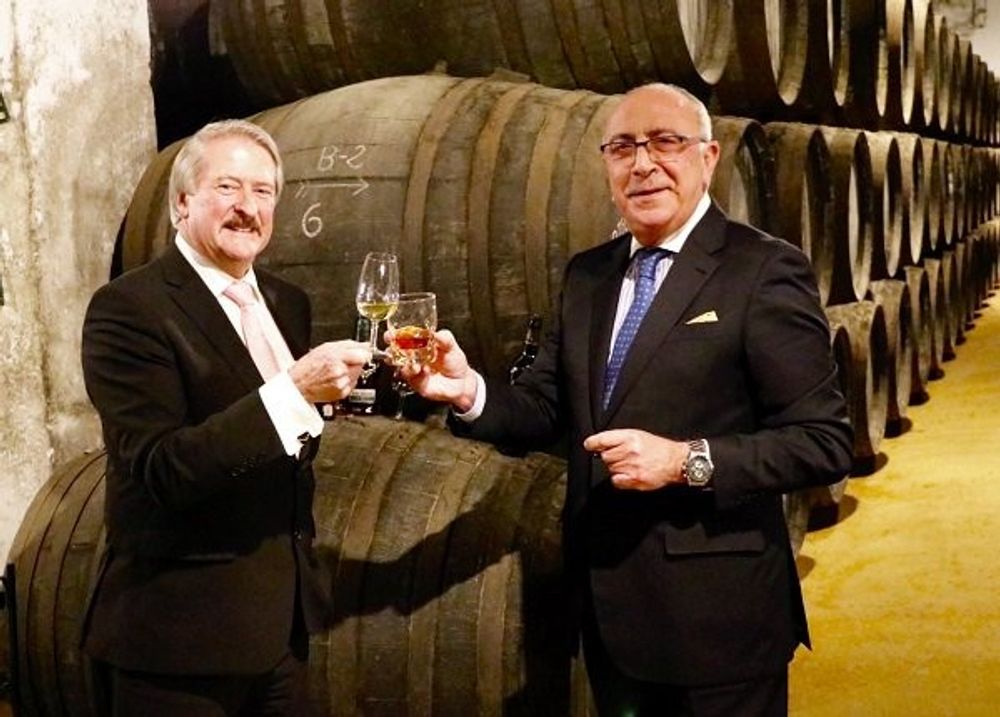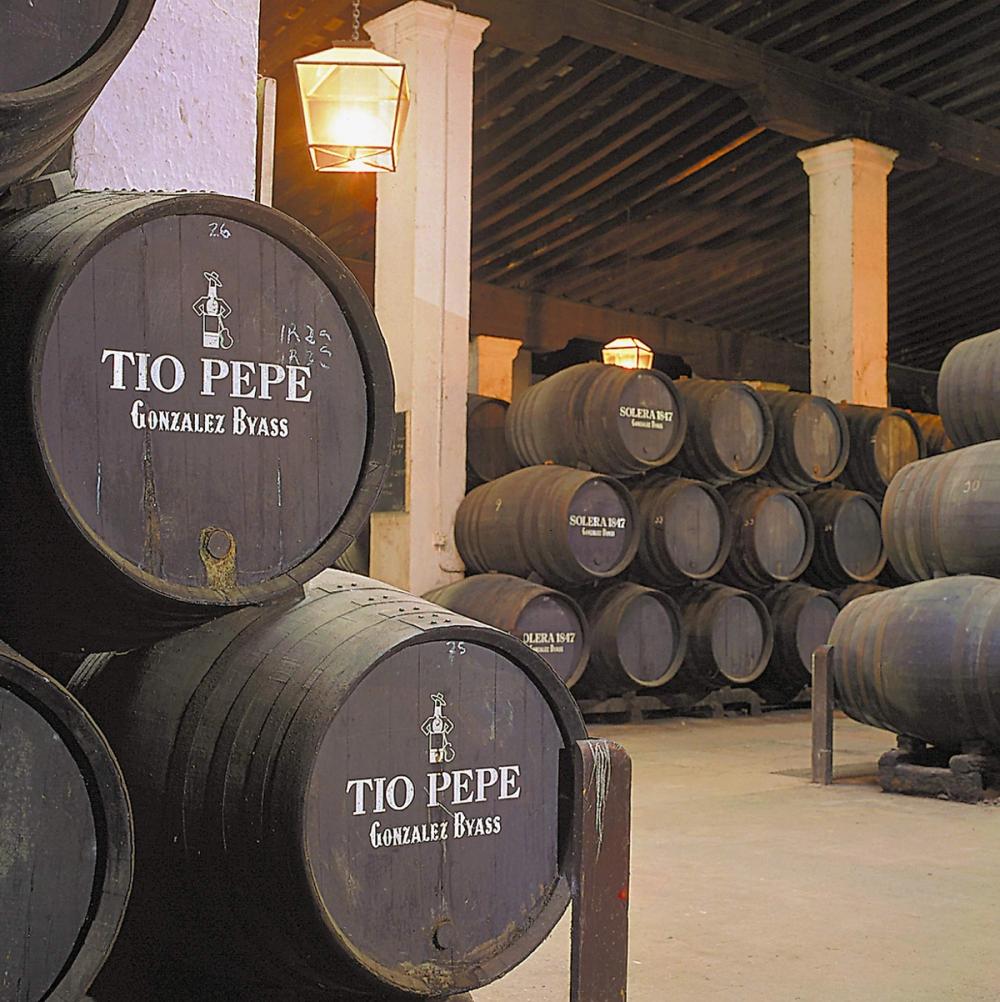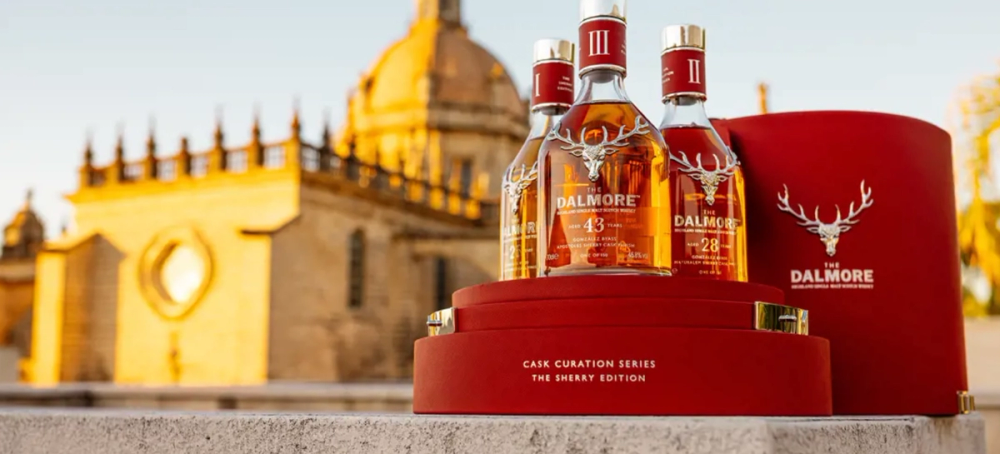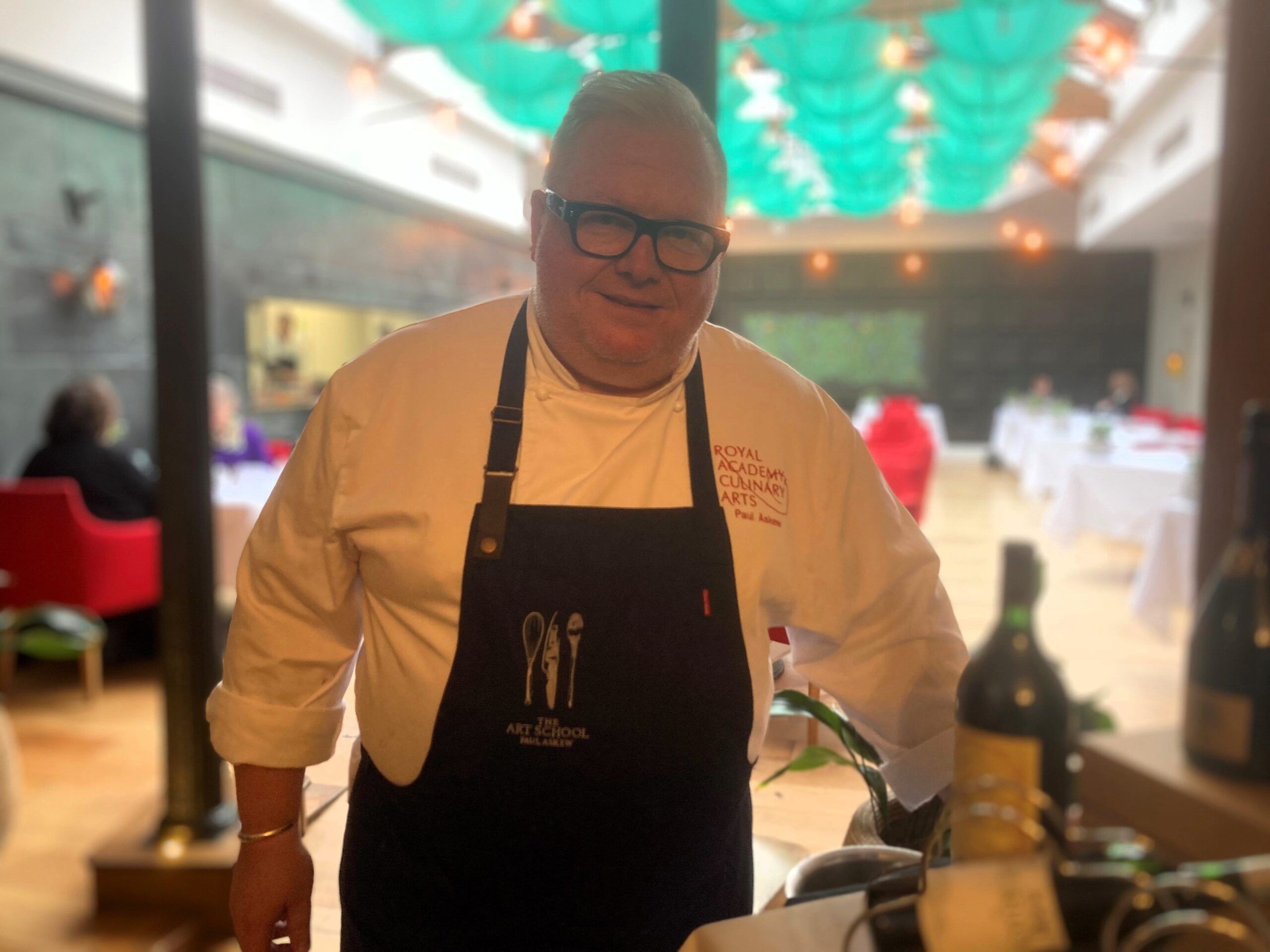“Whiskies that spend all their time maturing in bodega sherry casks are among the most highly prized spirits on the planet.” Antonio Flores, winemaker and master blender at Gonzalez Byass, explains to Rupert Ponsonby what makes them so special.
“Annie” Edson Taylor, an American schoolteacher, was a colourful characterful, becoming at the age of 63 on October 24, 1901 the first person to survive a trip over Niagara Falls in a whiskey barrel. She did it on purpose, choosing a slim 5’ high American oak barrel for protection. As its previous contents would have been American whiskey, her three second descent would have given her moments of extreme pleasure. This would not have been the case if she had travelled in a cask of stainless steel or plastic as its surfaces would have been washed clean, with no pores to store any sensuous flavours. She suffered no injuries apart from a lightly swollen lip.
So barrels are vital creatures, not only for travel, but also to age all manner of spirits, and‘sherry casks’ are at the apex. But do whisky drinkers really understand what those two words really mean?
Most sherry casks are of 600 litres. They were historically for storage, shipping and maturation – the pursuit of each sherry’s individual flavours being a latter-day development. But choosing the right cask from the right bodega is a complex artform: there are just so many potential determinants of the casks’ final flavour delivery.

Richard Paterson OBE, left, master distiller at Dalmore Whisky works closely with Gonzalez Byass’ master distiller, Antonio Flores to choose the right sherry casks to age its whiskies in
Richard Paterson OBE of Dalmore Whisky is a guru of this art, nurturing and maturing whiskies in barrels chosen by nose and eye for their special purpose. And in 2014 he joined with Antonio Flores, the award-winning winemaker and master blender at Gonzalez Byass, to examine the full potential of the latter’s sherry casks for different styles of whisky.One of the whiskies born of this partnership was Nomad, a whisky that is born in Scotland, and raised in Jerez. Nomad was launched in 2015.
At the moment, back labels too often talk blandly of ‘aged in sherry casks’ without describing exactly which sherry they really mean. And if – as Richard Paterson noted recently in a talk on sherry casks with Antonio Flores – 80% of the flavour influence of a whisky comes from its cask, then we need to examine the provenance of each sherry cask forensically.
I was lucky enough to spend some time with Antonio Flores and some of his team and what follows is their outpouring on ‘everything you ever wanted to know about sherry casks but were afraid to ask.’
What’s the difference between a bodega sherry cask and a ‘seasoned’ sherry cask?
To make great sherry and then great whisky, you need great casks. The most prized sherry casks are those that have spent their life inside a bodega, ‘bodega casks’ being used to age sherry for years or even decades as part of the famous solera systems in Jerez. These 600-litre bodega casks soak up lots of flavour from the sherries that they hold and, once they have finished their service inside a bodega’s solera, they are then used for ageing spirits, adding layers of complexity to the liquid.

The wonderful ageing qualities of a bodega sherry cask are in high demand
Those complex flavours are highly valued by distillers, who will pay high prices for such rare casks. Some whisky distillers will only use ‘bodega casks’ for “finishing” their whiskies for a few months before bottling, with only the most-expensive whiskies spending their entire maturation in bodega casks – just like our Gonzalez Byass Nomad whisky.
In contrast, some whisky distillers just use cheaper and more widely available “seasoned” sherry casks. These sherries used to season the casks are specially made for the process.
Since 2015, the Consejo Regulador of the Denomination of Origin “Jerez-Xérès-Sherry” has certified casks seasoned with genuine sherry.
‘Seasoned’ casks are made in Jerez by coopers who make the butts before seasoning them with ‘sherry’ for months (or occasionally years) allowing the wood to take on many of the same flavours that were beloved in the traditional transport or ‘export’ casks: These large butts were used until 1981 to ship the sherry to the UK to be bottled in cities including Bristol, Leith and London. Whisky distilleries then used those emptied butts to age their spirit.
When in 1981 the rules were changed, sherry had to be bottled in Spain, so the flow of sherry butts ceased and ‘seasoned casks’ began. But ‘seasoned’ casks are rarely as characterful as a ‘bodega’ cask, which can be brimming with different styles of sherry for years or decades.
Are bodega casks better than seasoned casks?

Gonzalez Byass has one of the largest selections of bodega sherry casks in the region
We believe that genuine bodega sherry casks are indeed superior and pack more complexity of flavour than ‘seasoned’ casks. Our bodega casks have been used to age sherries for years or even decades, soaking up all those complex flavours, which they can then impart to Nomad and other top-quality whiskies. The longer the casks hold our sherry, the richer the flavours they impart to the whiskies or brandies they house later.
Whiskies that spend all their time maturing in bodega sherry casks are among the most highly prized spirits on the planet. Casks that have only been ‘seasoned’ with sherry can never hope to match the depth and complexity of flavour imparted by genuine ‘bodega’ sherry casks. We leave five litres of sherry in the cask for its journey up to Scotland, and by the time it arrives this will be down to two or three litres. This is to keep the wood soaked and ready to get to work as soon as it is filled with whisky.
Only the Gonzalez Byass PX (Noe) casks differ as they travel with 20 litres of liquid due to the viscosity of our sweet dark Noe sherry.
What do bodega sherry casks bring to whisky?

Nomad is the whisky that has been created by the partnership between Dalmore Whisky and Gonzalez Byass with the whisky aged in its bodega sherry casks. It has also produced the Dalmore Cask Curation Series with different aged whiskies made from bodega sherry casks. See details at the end of the article.
‘Bodega’ sherry casks impart intense flavours to the whisky, built up by having held sherry for so long. They give a classic sherry influence to the spirits and those flavours will vary depending on the style of sherry that the cask held previously.
Pedro Ximenez sherry casks produce rich and intense super-sweet caramel and vanilla flavours, along with a touch of spice, while Oloroso sherry casks give bold and powerful notes of dried fruit, hazelnut, and spice. Fino sherry casks bring with them salted almond flavours, Amontillado sherry casks add delicate notes of dry nuttiness, and Palo Cortado sherry casks imbue whiskies with complex sweet frangipane, orange and caramel flavours, alongside dry nutty notes.
Which is the best wood for making sherry casks?
Oak trees are grown in many countries and some live to over 1,000 years old. Sherry casks are made from a variety of different oaks, with the Quercus Alba species of American white oak being particularly favoured as it gives a hint of spice to first the sherry and later the whisky. The natural components from the oak blend with the complexities of our sherries over time, and so it is imperative that we use only the highest-quality American oak casks to age our sherries. American oak is also more durable, with fewer but bigger pores than French oak, which allows more liquid to soak into the wood.
We must ensure that the premium characteristics of our sherries are elevated by the oak, not masked or inhibited in any way.
What’s more important – the quality of the casks’ oak or the quality of the sherry?
Using great oak is an important starting point, but it’s the quality of the sherry that makes the difference when it comes to ‘bodega’ sherry casks gaining their second lease of life in the whisky industry. When a cask sits soaking up all those flavours for so many years or even decades, it’s the quality of that sherry that will determine the quality of the cask when it enters service for ageing our Nomad or other whiskies.

Sherry casks at Bodega La Cuadrada
We trust our ‘bodega’ sherry casks to age Nomad, and our partners in the Scotch whisky industry trust them to age their spirits – because we know that the casks have already held sherries of the very highest quality. This will allow them to impart those flavours to their new liquid companions.
Can the toasting of a barrel affect the flavours it offers to whiskies?
The level of ‘toasting’ or ‘charring’ of a barrel can be important. Whereas the bourbon industry uses a very high “crocodile-style” toast equivalent to a level four – where the oak resembles a reptile’s skin – sherries generally employ a light level twotoast so as to let the sherries’ individuality show through.
Is the design of a bodega and its temperature and humidity important?
Jerez is 56m above the sea and our bodegas are designed to channel the winds into the bodega to cool the casks: All of Gonzalez Byass’s warehouse face west, so as to take advantage of the cooling element from those winds. In Jerez in hot weather the near-white floors of Albariza soil, containing 30-80% white chalk, are usually kept damp.
Known as the “cathedrals” from their impressive architecture and very thick stone walls, their orientation towards the prevailing wind lessens the heat and lets the fresh air from the ocean maintain the humidity 70% being the ideal: All of our bodega’s follow the same architectural principles.
The corners of the buildings (“almiscates”) are of curious shapes, built to facilitate the flow of rainwater and air with especially interesting ones in the area of Constancia. We also use esparto curtains to let in fresh air and to prevent the entry of dry ‘levante’ winds that lower humidity levels. Jerez’s famous narrow streets, covered with vines, give us important shade and make the temperature drop in the winery building.
The Arabs showed us how to store rainwater in the small reservoirs or “algibes” and in the famous “patios” to maintain water during the long period of drought. Now, during the summer, we spray water into the floor to maintain humidity and temperature.
The average summer temperature for a cask on the bodega’s earth floor may be five degrees cooler than those in the fourth level of racks above it and the flavours provided by these casks will be more complex than those at higher levels. In addition, the Angels share (evaporation of the spirit through heat) also differs according to the casks’ height in the bodega.
Conclusion: All of the above ‘sherry cask’ elements can have a massive effect on ‘flavour’: That is why just saying ‘aged in sherry casks’ fails to convey the full story. All casks are not born equal, and neither are their dwelling places.
- The Dalmore Distillery’s latest edition to its Cask Curation Series is a collection of three whiskies, crafted in collaboration with González Byass. The whiskies are: The Dalmore 26 Year Old, finished in González Byass 2002 Vintage; The Dalmore 28 Year Old, finished in a González Byass 30 Year Old Matusalem Sherry Cask, and the Dalmore 43 Year Old, finished in González Byass 30 Year Old Apostoles Sherry Cask.




































